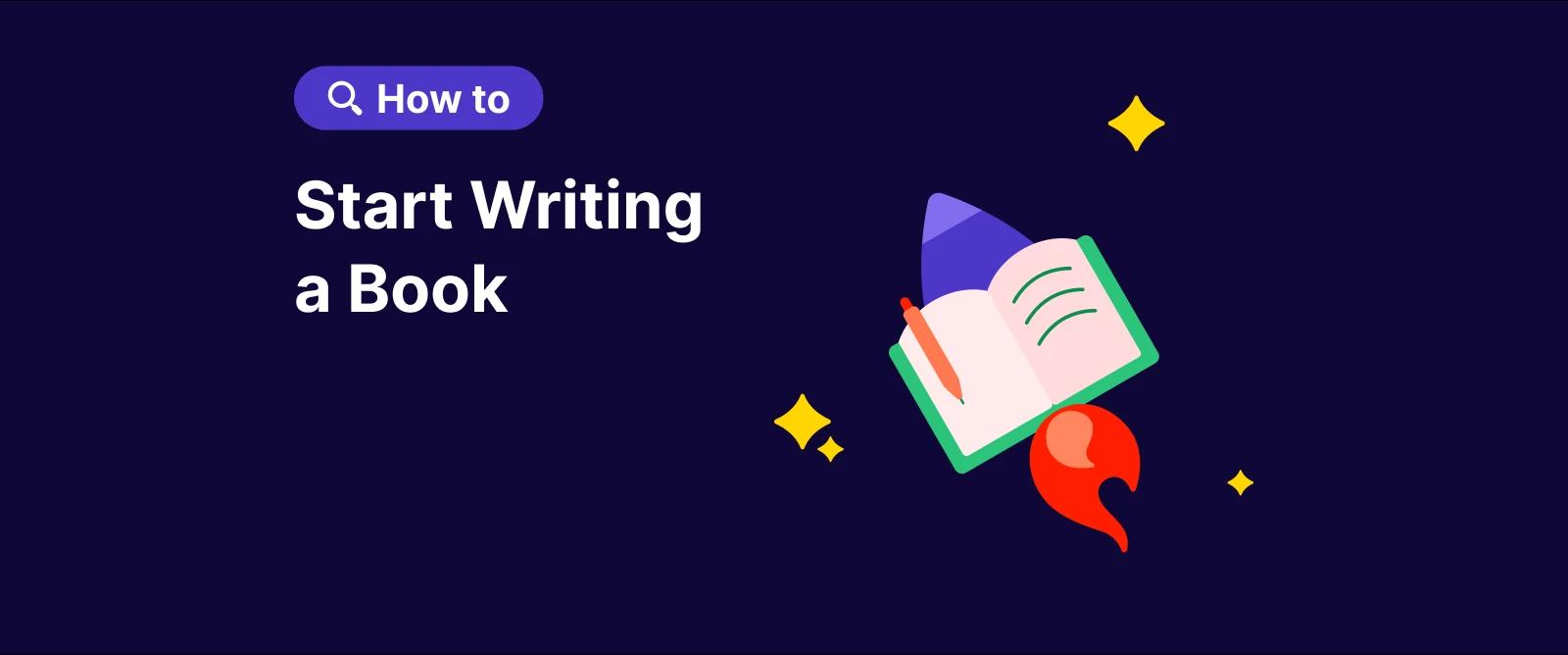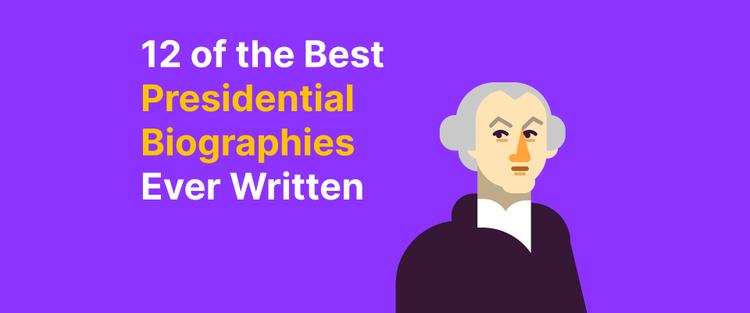Been thinking about writing a book, but can't get past the first paragraph? You've got the idea, but every time you try to start writing, you freeze up. Type something, hate it, delete it, repeat. You're stuck because nobody ever showed you how the process of writing actually works.
First-time authors get paralyzed by the blank page. They think they need everything mapped out or some magical burst of inspiration. You don't. You need a system for brainstorming ideas, getting words down, and keeping the momentum going.
Stephen King's 'On Writing' and books like it explain how real authors do this. Headway breaks those down into 15-minute summaries so you learn what works without spending weeks reading. You're figuring out how to write a good book while actually writing yours.
📘 Download Headway and learn how to start writing a book from people who've finished theirs!
Quick answer: Three practical steps to start writing a book
Figure out why you're writing this book. Your reason for doing it — sharing your experience, teaching something, whatever — is what'll keep you moving when the hard work starts sucking. Successful writers lock this down before they write the first page.
Brainstorm and flesh out your story idea. Play around with themes, characters, or personal stuff until your story idea feels right, then sketch out a quick synopsis. Doesn't need to be brilliant, just clear enough that you know where you're headed.
Write a not-so-perfect first draft without stressing. Just get something on the first page, even if it's not very good. Good writers all say the same thing: first drafts are bad, and the hard work of making them good happens later when you edit.
How to start writing a book: Seven steps for beginners
Here's the roadmap for new writers on how to start and finish their first book!
Step 1: Establish your why
Before you begin writing, it's essential to take the time to understand why you want to write the book. This reason serves as your emotional foundation and will keep you grounded throughout the writing process.
Whether it's a desire to share your personal story, impart knowledge, or create an escape through fiction, knowing your "why" gives you purpose and direction. It helps you stay motivated during challenging times, such as writer's block or self-doubt.
Having a clear emotional reason or purpose makes it easier to connect with your audience, write authentically, and anchor your writing to your goal. Losing momentum or feeling lost along the way is easy without a solid emotional foundation.
Steven Pressfield's 'The War of Art' captures the essence of dedication and creativity:
"This is the other secret that real artists know and wannabe writers don't. When we sit down each day and do our work, power concentrates around us. <...> When we sit down and work, we become like a magnetized rod that attracts iron filings. Ideas come. Insights accrete."
His words remind us that the act of showing up and doing the work is what draws inspiration and insight.

Tracking your word count and adhering to a writing schedule can be effective ways to establish a consistent writing habit. By setting a daily writing routine within your schedule, you create structure and stay focused, ensuring you regularly make time for your writing goals, for example, writing your first chapter. This approach fosters a sense of progress and accomplishment as you see your work grow each day.
Step 2: Generate and refine your idea
After you find out the reason why you want to write a book, you need to develop your concept. When generating ideas for your book, starting with a brainstorming session is essential. Allow yourself to explore different themes, main characters, or personal experiences that resonate with you. Outlining is a great way to give structure to your book ideas.
You can decide your writing style by reflecting on your passions and the stories you want to tell. If you are drawn to creating imaginative worlds and characters, writing fiction might be the right path for your first novel, while those who prefer sharing real experiences, facts, or insights may feel more aligned with writing a nonfiction book.
Once you have a basic outline, focus your writing session on crafting a compelling premise. A premise is essentially the heart of your story or message — it's the big idea that will hook your readers.
Next, try jotting down a short synopsis. This brief summary of your book, typically a few paragraphs, will help you clarify your vision. Writing a synopsis forces you to think about the key plot points or main ideas, making it easier to stay on track as you write.
The goal is to solidify your vision before diving into the actual writing so that you don't feel overwhelmed by the blank page.

Cornell University Professor William Strunk Jr. wisely notes in 'The Elements of Style,'
"Fortunately, the act of composition, or creation, disciplines the mind; writing is one way to go about thinking, and the practice and habit of good writing not only drain the mind but supply it, too."
Writing not only helps organize your thoughts but also fuels new ideas, turning the creative process into a cycle of inspiration and discovery. Now, let's find out how you can build a writing habit to achieve discipline and consistency.
Step 3: Start small, build a habit
Building a writing habit is crucial for long-term success, and one of the best ways to do this is by starting small. In 'On Writing: A Memoir of the Craft,' Stephen King emphasizes the importance of a fresh start. He states,
"The scariest moment is always just before you start. After that, things can only get better."
You don't need hours of free time or the perfect writing environment — just the discipline to sit down and write, even if it's for 15 minutes. Time-blocking is an effective method for carving out writing time in your day. By scheduling a specific time, you'll create a routine, which is key to building a sustainable habit. You can try different writing spaces, such as coffee shops, parks, or libraries, to change your environment and spark new inspiration.
Don't worry about the quality of what you write at first; the goal is to get words on the page. Over time, the small blocks of daily writing will accumulate, and you'll find yourself making more progress than you might expect.
Starting small also helps reduce the intimidation of facing a big project, such as an entire book, as it breaks it down into manageable, bite-sized chunks. Stephen King captures the essence of consistent writing in his memoir:
"When you write a book, you spend day after day scanning and identifying the trees. When you're done, you have to step back and look at the forest."
Persistence in focusing on the details is crucial, but it's also important to periodically step back and view the larger picture of your work. It was his way to become a bestselling author.
📘 Get Headway and learn not only the best advice on how to write a book, but also how to be focused and build the habits you need to succeed.
Step 4: Embrace the messy first draft
Embracing the messy first draft is crucial for new scriveners who may feel intimidated by the idea of producing a perfect manuscript from the start. It's important to remember that the first draft is not intended to be a polished piece of work; rather, it is a rough sketch of your ideas and concepts.

Freeing yourself from the need for perfection allows your creativity to flow more naturally. This stage is about capturing the essence of your short story or argument, not refining every detail. Each iteration enables you to build upon and refine your initial ideas as you progress through the drafting process.
The messy first draft provides the foundation upon which you can later construct a more coherent and polished manuscript. By viewing it as a starting point rather than a finished product, you give yourself permission to write freely and make mistakes.
This mindset encourages continuous book writing and revision, which are essential for developing a strong final piece. Elizabeth Gilbert emphasizes in her book 'Big Magic: Creative Living Beyond Fear' that it's crucial to maintain perspective on setbacks. As the quote reminds us,
"Whatever you do, try not to dwell too long on your failures. You don't need to conduct autopsies on your disasters."
Instead, view failures as learning opportunities and quickly refocus on moving forward. Accepting the messiness of the first draft is a powerful way to foster resilience and growth in your writing journey. It enables you to approach subsequent revisions with a clearer perspective and a more refined understanding of your material. She adds,
"It's a simple and generous rule of life that whatever you practice, you will improve at."
Ultimately, this approach can lead to a more satisfying and effective writing process. Now, let's explore the importance of editing your first draft.
Step 5: Editing and polishing
Editing and polishing are essential in transforming a rough first draft into a polished manuscript. After you've gathered your ideas, the real work begins — refining them. Self-editing is a crucial first step, enabling you to identify and correct obvious errors, thereby enhancing clarity.
Start by reading your work aloud to catch awkward phrasing and unclear ideas. Break the editing process into stages — start with structure and flow, then move to line edits for grammar and word choice.
While self-editing is essential, hiring a professional editor with a perfect English can elevate your work to the next level. Professional editors bring a fresh perspective, and their trained eyes can spot inconsistencies and errors you may have missed. They can also assist with more nuanced aspects of editing, such as refining pacing and character development.

For those just starting out, reading summaries of books about editing can provide valuable insights into the process, offering techniques used by seasoned authors. These resources often highlight practical advice, such as focusing on one type of edit at a time, including structural, copy, or proof edits.
Combining self-editing with professional help and learning from editing-focused books can lead to a polished and professional final manuscript. The journey from draft to finished product may be challenging, but it's an essential part of bringing your story to life. Furthermore, let's examine the steps to overcome creative barriers in more detail.
Step 6: Overcome creative blocks
Overcoming creative blocks is one of the biggest challenges writers face, especially when self-doubt and fear take hold. It's natural to question whether your ideas are good enough or if your writing will resonate with others, but pushing through these moments is key to success.
One of the best ways to overcome these blocks is to remind yourself that creativity is a process, and it's okay to have off days. Taking small, consistent steps forward can break the cycle of doubt, even if it means writing just a few sentences on difficult days.
Elizabeth Gilbert wisely states in 'Big Magic: Creative Living Beyond Fear,'
"Own your disappointment, acknowledge it for what it is, and move on."
This approach enables you to confront your doubts directly while also encouraging forward movement, rather than being weighed down by setbacks.
Stop seeing creative blocks as failure — they're just telling you to switch things up and try a different angle. When fear or doubt becomes overwhelming, Headway can help by providing the answers you need.
The app features book summaries on creativity, dealing with mental blocks, and personal growth topics that might inspire you to take action. The daily prompts and exercises are also helpful — they force you to think differently and unstick whatever's holding you back.

When fear and self-doubt arise, we are on the verge of something important. As Steven Pressfield notes in 'The War of Art,'
"Are you paralyzed with fear? That's a good sign. Fear is good. Like self-doubt, fear is an indicator. Fear tells us what we have to do. Remember one rule of thumb: the more scared we are of a work or calling, the more sure we can be that we have to do it."
This perspective shifts fear from being a barrier to becoming a compass, guiding you toward the work that truly matters — publishing your first book.
Step 7: Publishing your book
Publishing your own book is an exciting milestone, but it also presents important decisions about which route to take: self-publishing or traditional publishing. Both paths have their advantages and challenges, and understanding them will help you make an informed choice.
Traditional publishing typically involves submitting your manuscript to literary agents or publishers, who decide if it fits their list. If accepted, they handle much of the marketing, distribution, and editing; however, you may have to compromise on creative control, and royalties may be lower.
On the other hand, self-publishing gives you complete creative freedom and allows you to retain all rights to your work. It's a great option if you want to get your book out quickly or experiment with different genres.
However, you'll need to take on tasks such as marketing, cover design, and formatting, or hire professionals to handle these services. Platforms like Amazon Kindle Direct Publishing and IngramSpark make self-publishing accessible by enabling authors to easily publish and distribute their books, both digitally and in print.
Both paths have produced successful authors, so it ultimately depends on your goals and resources. Whether you aim for the support of a publishing house or prefer the autonomy of self-publishing, navigating these options with research and preparation is key.
Whichever path you choose, persistence and attention to detail will ensure your book finds its audience and you become a full-time writer and published author.

Start writing a book, learn from bestselling authors on Headway!
Starting a book means figuring out why you're doing it, refining your idea, committing to writing regularly, and drafting that not-so-perfect first draft. Fiction writers deal with the same stuff as everyone else — writer's block, perfectionism, fear of failure.
Before committing to writing, you should also consider upgrading your reading skills! Check out these articles and elevate your reading game too:
Headway offers summaries that include writing tips from The New York Times bestselling authors who've been through this process already.
You get 15-minute summaries on creative writing prompts, techniques, beating writer's block, and what actually works. Stop wasting time on social media looking for inspiration — learn from people who have finished their bestseller instead.
📘 Download Headway and learn what successful fiction writers already know while you're working on your book!
FAQs about how to start writing a book
How do I start a book with no experience?
Stop waiting to feel ready and just write something. Figure out your main idea, understand why it matters to you, and get words on paper even if they're bad. Your first book won't be perfect — nobody's is. Read what other authors say about writing, pay attention to books you love, and write regularly. You learn by actually doing it, not by preparing to do it.
What makes a book idea "good"?
A good book idea is one that resonates with people. It needs to create some kind of emotional response in your readers — excitement, curiosity, deep thought, or something relatable. What makes it a good idea is its uniqueness. If your book idea generates interest and curiosity, the idea will connect and resonate with readers in a more meaningful way.
What do most writers struggle with?
Getting stuck, doubting themselves, and never finishing. Tons of people edit chapter one forever or quit after a few weeks. Being a perfectionist will wreck you faster than anything. Finding time to write when you've got a job and life happening is hard. Also, that frustrating gap between what you picture in your head and what comes out on paper.
How many hours does Stephen King write a day?
Stephen King spends around four to six hours a day writing, typically in the morning. He believes that consistency is important and suggests writing at least 1,000 words every day to maintain good momentum. The key is regularity, not quantity, to help facilitate the creative process.
What is the best time of day to write?
Whenever your brain works, and you can do it consistently. Morning people swear by writing before work, while night owls do their thing at 11 pm. Test different times and see when you're not fighting yourself. The "right" time is whenever you'll actually sit down and do it. Consistency beats chasing the perfect conditions.
What are the 5 basic writing skills?
Putting sentences together properly, knowing enough words, organizing your thoughts, saying what you mean clearly, and fixing your own mess. You have to build sentences that work, have vocabulary to express yourself, arrange ideas so they make sense, write without confusing people, and catch your mistakes.










